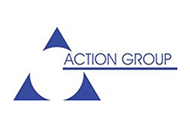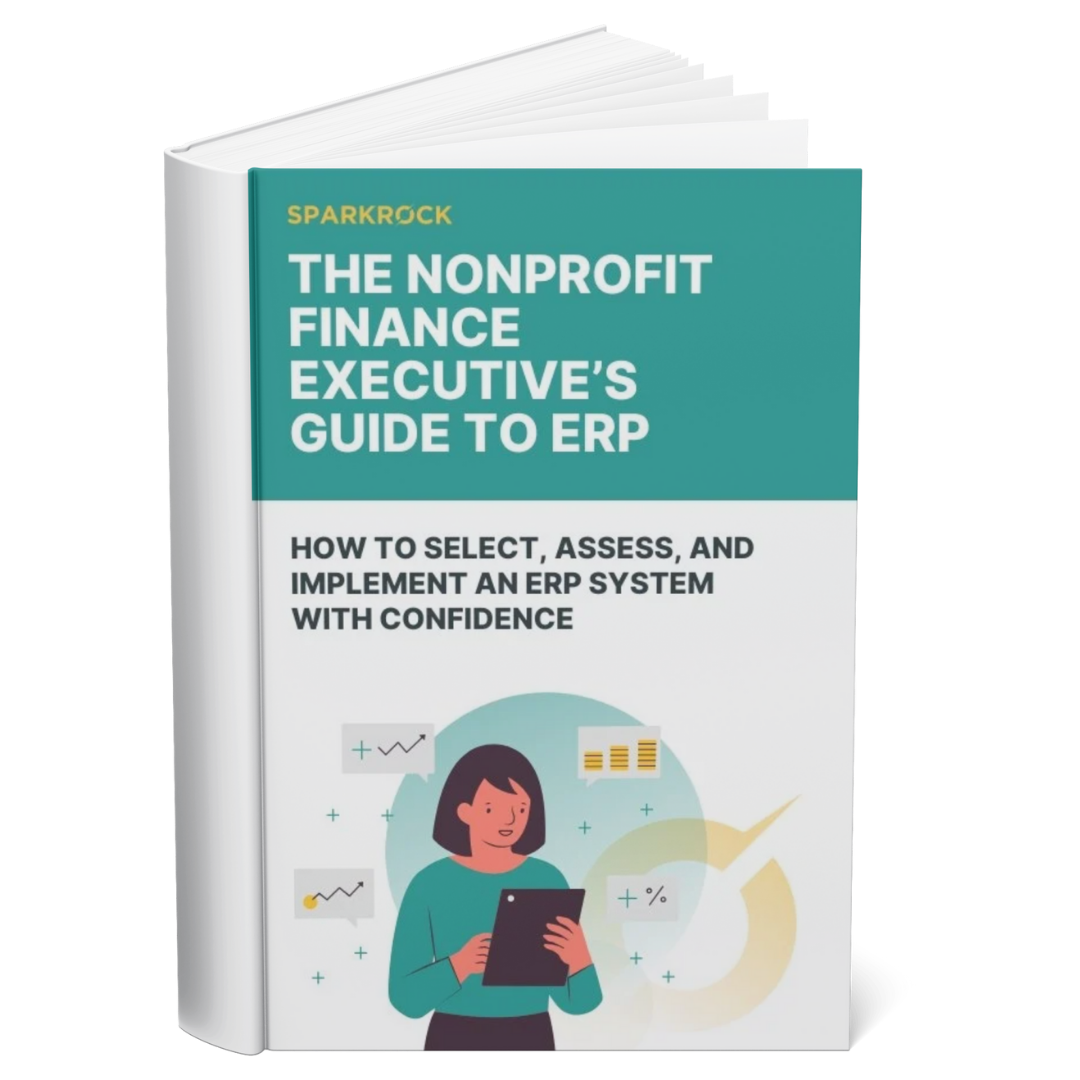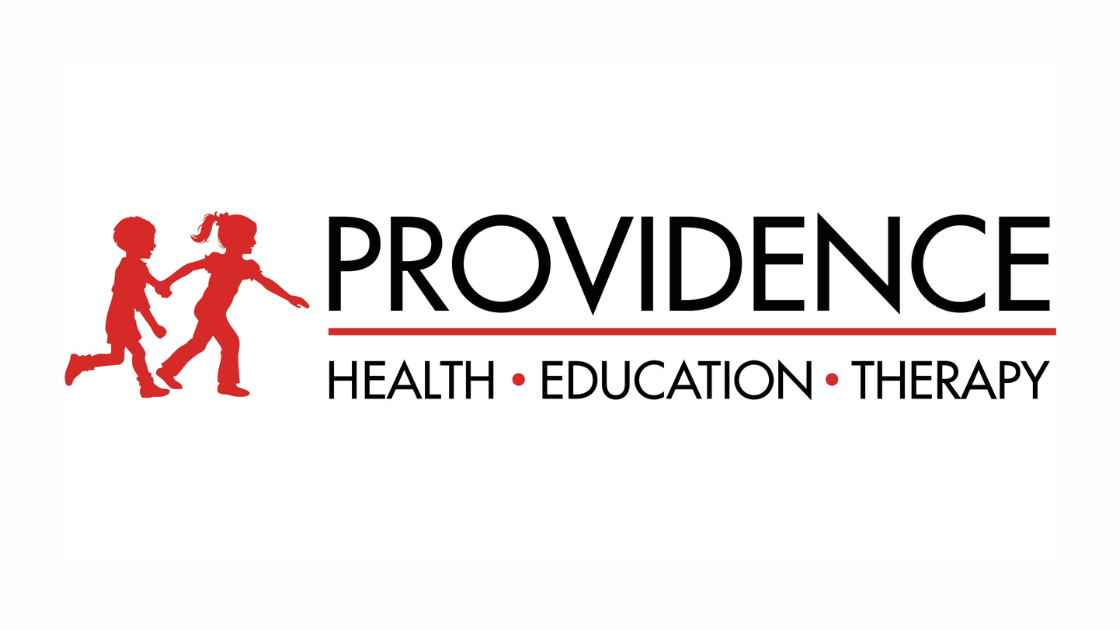Webinar Title: De-Risk Your Nonprofit’s Technology Platform and Increase Employee Happiness and Efficiency
Gary (Sparkrock):
Welcome, everyone! This webinar is the first in a new series designed to empower nonprofit organizations like yours with the right tools to make a greater impact in your communities.
For those who don’t know me, my name is Gary. I’m a Senior Account Executive at Sparkrock, having joined the company eight months ago. But I’ve been in the ERP space for over a decade, helping both nonprofit and for-profit organizations find the right solutions to manage and automate their finance and HR processes.
The more I worked with nonprofits, the more I realized that’s where I wanted to focus my energy. That’s how I ended up at Sparkrock—it gave me the opportunity to do just that. I’m sure I’ll have the opportunity to speak with many of you directly in the future.
As you may know, Sparkrock is a Microsoft Business Partner, and we work closely with Microsoft’s Tech for Social Impact team. Before we dive into today’s main content, I’d like to pass it over to Bryan Allen from Microsoft to kick us off and talk about the amazing work they do for the nonprofit sector.
Bryan Allen (Microsoft):
Thank you, Gary—I appreciate the introduction, and thank you all for joining the session.
Microsoft is extremely proud to be aligned with Sparkrock to support nonprofit organizations in achieving more. To frame our work, it’s helpful to start with Microsoft’s mission:
“To empower every person and every organization on the planet to achieve more.”
As part of that mission, we created Microsoft Tech for Social Impact, a program that offers discounted and granted software to nonprofits—so they can accelerate their mission outcomes.
One thing we learned early on: for nonprofits to truly benefit from Microsoft’s offerings, they need access to affordable technology. That’s why we’ve built out a dedicated nonprofit sector channel—so that partners like Sparkrock can meet organizations where they are and provide relevant, impactful solutions.
[Slide Transition]
To put things into perspective, here are a few stats on Microsoft’s impact in the nonprofit sector (based on the last fiscal year):
- Microsoft provided $3.2 billion USD in discounted and granted software to nonprofit organizations.
- Discounted software: Significantly reduced pricing to improve accessibility.
- Granted software: Free software provided to eligible nonprofit organizations.
- Over 332,000 nonprofit organizations around the world currently access these offers.
That’s incredible—but we know it’s just a start. Our goal is to reach 4 to 5 million nonprofits globally, and we’re working to do that in an accelerated timeframe.
Microsoft works almost exclusively through partners—which is one of the reasons we value our relationship with Sparkrock so highly. They’ve been a fantastic partner, particularly in the Microsoft Dynamics 365 ecosystem.
Here are a few reasons working with a Microsoft partner matters:
- Expertise – Our partners stay up to date with Microsoft’s frequent product updates and help customers apply those changes effectively.
- Local Access – With a global network of partners, you’re likely to find support near your own community.
- Adaptability – Partners help you stay current in a fast-changing tech environment.
Hopefully, this gives you a sense of what Microsoft offers to the nonprofit space—and why working with a trusted partner like Sparkrock makes such a difference.
With that, I’ll turn it back over to Gary to share more about Sparkrock and how they support organizations like yours.
Gary (Sparkrock):
Thanks, Bryan.
Now, for those of you who may not be familiar with Sparkrock, here’s a quick overview of who we are and what we do.
Sparkrock was founded in 2003 and has had a unique position in the ERP space from the beginning. We’ve partnered with Microsoft since day one as part of the Microsoft Embedded Program.
When people think of Microsoft, ERP might not be the first thing that comes to mind. But Microsoft has been in the ERP space for over 30 years—and just as Microsoft has evolved through technology and innovation, so have we.
Today, Sparkrock is built on top of Microsoft Dynamics 365 Business Central, Microsoft’s robust cloud-based ERP solution originally designed for for-profit organizations.
But here’s what we’ve learned from years of experience working with nonprofits and human services organizations:
Business Central—like many other ERP systems designed for for-profits—doesn’t include the features nonprofits really need.
Things like:
- Invoice approvals
- Fund management
- Grant accounting
- Regulatory reporting
...just aren’t built into those systems.
Nonprofits using these tools often end up implementing manual workarounds, which consume time and resources—and can distract from mission-critical work.
Before Sparkrock, nonprofits were typically forced to choose between:
- Well-established ERP solutions built for businesses (but lacking nonprofit functionality), or
- Niche nonprofit-specific ERP tools (that often lack the robustness, scalability, and security of enterprise systems)
Neither option was ideal.
With Sparkrock, we’ve brought the best of both worlds:
- The stability, security, and performance of Microsoft’s cloud infrastructure
- The sector-specific features nonprofits and human services organizations need
This means you can:
- Leverage Microsoft’s significant and ongoing investment in privacy, security, mobility, and interoperability
- Work inside tools you already use—like Microsoft Teams, Outlook, and the full Microsoft 365 suite
- Gain access to 20+ years of nonprofit-specific functionality built directly into Sparkrock
I'm confident in saying: Sparkrock is built to meet nonprofit needs in a way no out-of-the-box ERP can. That’s why so many organizations across the U.S. and Canada have chosen us as their trusted partner.
You can see a few of them on the screen now—part of our growing customer community. Some names you might recognize include:
- People First – supporting youth, families, and seniors
- WJS Canada – serving and empowering people with disabilities
We’re proud to support them—and we’d be proud to support you.
Now that you have a better idea of who we are and what we do, I’d like to introduce you to James, who will walk you through a product demonstration and show you how Sparkrock integrates with Microsoft Teams and the Office 365 suite. James is our Senior Project Consultant here at Sparkrock—and he’s going to walk you through how we help organizations like yours reduce risk and increase employee productivity. James, the floor is yours.
James (Sparkrock):
Thank you very much, Gary, and good afternoon, everyone.
My name is James Fa, and I’ve been working with nonprofit organizations for over 25 years, helping them make informed business technology decisions. I’ve worked in implementation, product, and support teams—and now, I primarily focus on evaluation teams, helping nonprofits assess software fit for their needs.
Today, we’re going to cover several key themes that we’ve seen make a significant difference for organizations like yours—especially when it comes to increasing productivity and reducing risk. These four themes are:
- Safeguarding data and providing auditors peace of mind
- Enhancing the employee experience
- Simplifying operations
- Making meaning out of data
Let’s begin with the first: Cloud and SaaS – Safeguarding Data & Auditor Confidence
Theme 1: Safeguarding Data & Auditor Confidence
The challenge many nonprofits face today is growing pressure to reduce technical risk, especially in a cybersecurity context. A major contributor to that risk is reliance on legacy, on-premises applications—often outdated and not regularly patched.
With on-prem software, updates can be expensive or disruptive. You have to manage:
- Hardware upgrades and replacements
- Operating system patches
- Security and performance maintenance
- Manual application upgrades that may only happen every 1–2 years
These are real burdens—costly and distracting.
What matters most in de-risking your technology is moving to true cloud and SaaS-based applications.
Definitions:
- Cloud means the application is run and maintained by the provider (like Microsoft) in the cloud, eliminating your infrastructure responsibilities (e.g., server maintenance, disk failures, etc.).
- SaaS (Software as a Service) means the software is continuously updated and maintained. You don’t have to worry about application patches, upgrades, or falling behind. It’s evergreen.
This shift dramatically reduces technical risk.
But technology risk is only one piece of the puzzle. You also need to manage data security risks.
Instead of relying on a small internal IT team, moving to Microsoft means placing your data in the hands of thousands of security professionals whose job is to safeguard it.
Here are some critical data protection checkpoints to consider when evaluating solutions:
- Data Residency – Many U.S. and Canadian funders require that data be stored domestically. Ensure your provider supports this.
- Data Encryption at Rest – Ensures that data stored in databases can’t be read, even if accessed improperly.
- Data Encryption in Transit – Protects data as it moves between users and the cloud.
- Data Compliance – Important for satisfying funder or regulatory requirements (e.g., SOC audits).
- Routine Security Audits – Provides assurance that your systems are consistently monitored and meet compliance standards.
Funders and auditors increasingly request SOC reports, bridging letters, and similar documentation. Without a business-grade, cloud-based solution, that level of compliance is hard to meet.
Theme 2: Enhancing the Employee Experience
Let’s shift to the second theme: Improving employee experience through better technology.
We often hear from nonprofits that their business processes are complex—especially when managing multiple funding streams. Tracing and reporting on those funds accurately requires precision.
But if your systems are difficult to use, this becomes a major barrier.
And there’s another growing challenge: a changing workforce.
New employees—especially from younger generations—expect modern, intuitive tools. They're less tolerant of outdated systems. If your technology feels clunky, it may hurt your ability to recruit and retain talent.
Let me show you an example of how Sparkrock, built on Microsoft Dynamics 365 Business Central, makes tasks faster and easier for staff.
[Live Demo – Vendor Filtering Scenario]
This is Sparkrock, our ERP solution built on the Microsoft Dynamics Business Central platform. It includes many features tailored to nonprofit needs—but I’m going to focus on usability.
Let’s say I get a request from my manager:
“Can you send me a list of all vendors we spent more than $500 with last fiscal year?”
Here’s how I’d do it using Sparkrock:
- I open the Vendor List in Sparkrock.
- I open the Filter Panel and search for the field called “Purchases.”
- I set the filter to show purchases greater than $500.
At this point, I see vendors over $500—but for all time. So I apply a date filter—in this case, the last calendar year (e.g., January 1 to December 31).
Now I have a refined list showing only the vendors that meet the criteria for the specified fiscal period.
But here’s where the Microsoft ecosystem shines.
Seamless Productivity Integration
Let’s say my organization uses Microsoft Teams. I don’t need to export this list, open an email, and send it manually.
Instead, I click “Share in Teams”, and it goes directly to my manager—without ever leaving the ERP interface.
This is the kind of seamless productivity Microsoft is enabling. You’re no longer switching between disconnected systems. You're using a unified platform that feels natural and intuitive.…And it'll send a live link to that individual directly from here. For example, I can type in a name—let’s say Sher Hashimoto—and Sparkrock will send a link to the filtered vendor list we just worked on.
This helps declutter inboxes. You’re not downloading spreadsheets or attaching files to emails—it’s a cleaner, faster way to share relevant data.
Now let’s say I do need to work in Excel. I can simply use the "Open in Excel" feature. Sparkrock downloads the filtered list into Excel, which is helpful when I need to manipulate or analyze the data offline.
But here’s where it gets even more powerful: imagine my manager asks me to update the status of all these vendors. I can use "Edit in Excel"—a feature that pulls a live, editable dataset into Excel.
From there:
- I see all vendors and relevant fields
- I can update statuses, assign buyers, or change other values
- Then I hit Publish, and Sparkrock writes those changes right back into the system
This two-way Excel integration is incredibly efficient.
Now let’s take it a step further.
Let’s say I want to send an email to each vendor—maybe a thank you note or an update to their terms. I can use the "Send Email" feature, which integrates with Microsoft Word. That allows me to merge vendor data into a pre-built Word template and send personalized messages—without manual entry.
Deep Integration Across Microsoft Tools
I also want to show you how this efficiency extends beyond Sparkrock itself—especially into the Microsoft ecosystem.
For example, there’s an Outlook add-in for Sparkrock. If I receive an email from a vendor or customer linked to our financial system, I can view live ERP data directly in Outlook.
When I click the Sparkrock add-in:
- It asks me to select the company (if I manage multiple entities)
- Then it shows real-time data: balances, transaction history, notes, etc.
- I can even add new notes—all without leaving Outlook
This is a modern way to interact with your ERP system—inside the tools you already use every day.
Personalized Dashboards for Every Role
Another way Sparkrock improves usability is through Role Centers—personalized dashboards designed for specific job functions.
Out of the box, Sparkrock includes many pre-configured Role Centers (e.g., for finance, HR, procurement), but users—or designated super users—can customize them further.
Let’s say I’m a finance user:
- I can move, hide, or rearrange dashboard elements
- I can focus only on the information I need to do my job
- Over time, this personalization helps reduce clutter and boost efficiency
Designed for a Multi-Generational Workforce
Today’s workforce spans multiple generations—including digital natives who’ve grown up with intuitive, mobile-first technology.
Sparkrock supports:
- Tablet interfaces
- Mobile access
- Responsive design that allows users to work across multiple devices simultaneously
Here’s an example:
Let’s say I’m working on a reconciliation in the desktop app. I get a mobile notification that a purchase needs approval. Instead of breaking focus or writing myself a reminder, I just open my mobile app, review the request, and approve or reject it immediately.
These features might seem small individually—but collectively, they create massive gains in productivity and help organizations better support users across generations.
Theme 3: Simplifying Operations with a Fully Integrated Solution
Now let’s move to our third theme: Simplifying Operations.
Many organizations—especially finance teams—are burdened by disconnected systems. Think about how many tools you might be using today:
- One system for accounting
- A different tool for requisitions
- A separate approval process
- Excel for reporting
- Separate HR, payroll, scheduling, and timekeeping platforms
Each of these has to stay in sync. That means:
- Duplicating key data (e.g., cost centers, departments, account codes)
- Manual reconciliations
- Higher data risk
- Greater reliance on IT or finance to fix sync issues
This complexity causes inefficiency, frustration, and risk.
The solution?
Consolidate into a single, fully integrated platform—like Sparkrock—where all components work together natively.
Example: Grant and Project Management
Let’s walk through a typical nonprofit scenario:
- Your organization applies for a new grant
- During pre-award, you track the application using Sparkrock
- Once the award letter arrives, Sparkrock automatically creates the new cost center and GL codes in your financial system
- That grant is now available for:
- Requisition management
- Encumbrances and commitments
- Purchasing workflows
You can also assign managers to the grant for real-time budget vs. actual monitoring—without needing a separate reporting tool.
Because everything is integrated, there’s no duplication, no syncing, and no guesswork.
As we go along in real time, you can see the tremendous advantage of having all these pieces talk to each other. From the initial grant setup, everything flows—through accounts payable, purchasing, expense claims, P-Cards, and even into payroll.
Let’s say this particular grant funds travel or services. As soon as it’s created in Sparkrock, users can immediately begin categorizing expenses to that grant or cost center—whether through expense claims or corporate cards.
If you're building new positions tied to a program, Sparkrock also synchronizes with position management, so you can create roles for new hires or part-time staff. Their time can then be entered through the time clock or time entry, categorized directly to that grant.
Or maybe you're scheduling existing staff to work on the grant—again, those hours are categorized to the right cost centers, which then flow into:
- Payroll administration
- The general ledger
- Real-time end-user reporting
It may sound like a lot of moving pieces, but that’s the point: everything is connected.
In contrast, organizations piecing together four, five, or even six separate systems are creating unnecessary risk and inefficiency. That’s why starting with a fully integrated financial management solution is so important.
Building on the Dynamics 365 Business Central Platform
Now, many of you are already familiar with Microsoft Dynamics 365 Business Central—the platform Sparkrock is built on.
So we started this session by showing you the complete picture of what Sparkrock can do. But we also want to share a few insights based on our experience working with that platform.
Business Central is an excellent platform from both a usability and infrastructure perspective. Microsoft has done an outstanding job of integrating it into the broader ecosystem.
However, much of Business Central’s native functionality was developed for the for-profit sector—with a strong focus on things like:
- Sales
- Inventory
- Production
- Warehouse management
But what nonprofit and human services organizations really need is an equivalent level of sophistication on the cost side:
- Managing cost centers
- Controlling access
- Requisition-to-payment workflows
- Staff allocations by funding source
That’s where Sparkrock significantly extends the base platform.
What Sparkrock Adds to Business Central
Here’s how we approach it:
- In areas like accounts receivable, inventory, and cash management, we make minor enhancements to what already exists in Business Central.
- In key operational areas—like general ledger, purchasing, accounts payable, fixed assets, budget management, employee and absence management—we’ve made significant enhancements to meet nonprofit-specific needs.
- And finally, we’ve added entirely new modules that don’t exist in Business Central at all. These include:
-
- Position management
-
- Time entry and scheduling
-
- Grant tracking and reporting
-
- Compliance-ready fund accounting
-
- Nonprofit-specific reporting frameworks
These additions complete the nonprofit technology picture—bridging the gap between a general-purpose ERP and a purpose-built nonprofit solution.
Theme 4: Making Meaning Out of Data
Let’s move into our final theme: making meaning out of data.
Microsoft has done transformational work in democratizing access to analytics tools, especially with Power BI.
A few years ago, Power BI was an expensive tool accessible mostly to large enterprises. Today, it’s widely available—and incredibly powerful for nonprofits.
With Power BI, you can:
- Visualize and analyze virtually any kind of data
- Create real-time dashboards for any role
- Connect systems like client management, fundraising, HR, and finance
- Explore insights across departments, programs, and outcomes
Here’s an example:
You may have client or student data in one system, and financial data in another. Power BI helps you explore intersections—like linking program outcomes to budget data—supporting deeper evaluation and better reporting to funders.
Live Demo: Power BI in Sparkrock
Let’s take a quick look inside Sparkrock.
Sparkrock features deep Power BI integration:
- Data flows bidirectionally between Sparkrock and Power BI
- Users can view live dashboards embedded in their Sparkrock interface
- Dashboards can also be expanded into full-screen views for deeper analysis
Here’s a live dashboard embedded directly in Sparkrock. I can:
- Click and interact with the data
- Visualize financial KPIs, grant balances, or HR metrics
- Share interactive views with other team members
We’ve seen customers use Power BI not just for internal operations, but also for:
- Grant applications – by pulling in public data sets (e.g., demographics)
- Impact reporting – to demonstrate outcomes linked to specific funding
- Strategic planning – by exploring trends over time
Power BI helps nonprofits move beyond spreadsheets—and into strategic, data-informed decision-making.
Summary: Four Key Takeaways
To recap, here are the four key themes we covered today:
- True Cloud and SaaS
-
- Dramatically reduce cybersecurity and data risk
-
- Eliminate infrastructure overhead
-
- Ensure security, redundancy, and compliance
- Enhancing Employee Experience
-
- Simplify workflows
-
- Adapt to multi-generational teams
-
- Enable intuitive tools like mobile apps, Excel integration, and personalized dashboards
- Simplifying Operations
-
- Consolidate systems to reduce reconciliation pain
-
- Break down silos between departments
-
- Improve visibility and data accuracy
- Making Meaning Out of Data
-
- Use Power BI to turn raw data into insights
-
- Connect systems and outcomes
-
- Empower your team with real-time, visual analytics
Technology Risk Assessment Tool
Before we wrap up, we want to share a simple tool to help you assess your organization's technology risk.
This Technology Risk Assessment is a practical worksheet you can use internally. It can:
- Kickstart conversations
- Benchmark your current tech posture
- Guide your next steps toward digital transformation
Here’s how it works:
- For each question (e.g., "How many systems do you use for finance and HR?"), give yourself a score.
- The worksheet adds up your total and places you on a risk spectrum.
- Based on your score, we offer suggestions for improvement.
If you’d like help completing it or interpreting your results, feel free to reach out—we’d be happy to walk you through it.
De-Risk Your Nonprofit’s Technology Platform and Increase Employee Happiness and Efficiency Q&A and closing remarks:
James (Sparkrock):
Before I hand it back over to Gary, we’re going to open it up for questions. If you have a question, please feel free to type it into the Q&A or chat window.
Also, a quick plug for our next webinar—we’ll be focusing on finance-specific themes and exploring features designed to help nonprofit finance teams overcome industry challenges. We’ll cover four new topics we believe will be valuable to you.
With that, I’ll hand it back to Gary.
Gary (Sparkrock):
Thanks, James!
It’s now time for the Q&A session. As James mentioned, if you haven’t done so yet, please enter your questions in the Q&A section at the top right of your console.
We’ve already received a few questions—let’s dive in.
Q1: James, you mentioned the importance of data sovereignty and geo-redundancy. Can you provide some practical examples of how these aspects benefit nonprofits in terms of data security and compliance?
James:
Great question.
We’ve seen this come up most often in cases where organizations receive funding from sources—especially in the public sector—that require strict data residency. Some jurisdictions mandate that your data must remain on national soil, and that’s built right into the funding agreement.
That’s data sovereignty—making sure your data stays in the correct geographic region.
Geo-redundancy, on the other hand, is about resilience. With on-premise servers, if there’s a power outage or hardware failure in your building, that could be a major disruption.
Geo-redundancy ensures that your data is synchronized in real time to a second physical location. If something happens at one site, your operations fail over seamlessly to the backup site.
This is something most nonprofits can’t replicate on their own, but Microsoft provides this natively in its cloud infrastructure.
We also see these features become critical during technology audits. More and more auditors are asking for proof of data sovereignty, geo-redundancy, and business continuity planning. If you want to avoid findings during an audit, it’s best to get ahead of these now.
Q2: Could you elaborate on how integration with Azure AD and Outlook enhances user experience? Are there customization options for nonprofits with unique needs?
James (Sparkrock):
Absolutely. Two parts to that question.
First—Azure AD (Active Directory) integration enables single sign-on. That means users can log in to Sparkrock with the same credentials they use for Office 365. It reduces friction for users and improves security for your organization.
If someone leaves your organization, IT just disables their account in one place—and access is cut off everywhere, including Sparkrock. That’s a major compliance win and reduces the risk of unauthorized access.
Second—customization. Our product team works hard to minimize the need for customizations by building nonprofit-focused functionality into Sparkrock. But for organizations with unique scenarios—like specific funder requirements or integration with other systems—we offer extension tools that let us customize safely.
These don’t block future upgrades or security patches. That’s the beauty of a mature SaaS architecture.
Q3: Bryan, how can nonprofits access discounted and free Microsoft software?
Bryan Allen (Microsoft):
Great question.
The easiest way is to visit the Microsoft Nonprofit Hub. We’ll be sharing a link after the session so you can go directly there.
All nonprofits need to complete an eligibility process to qualify for Microsoft’s nonprofit offers. Once approved, you’ll gain access to discounted and granted software, including:
- Microsoft 365
- Dynamics
- Azure
- Power BI
...and many other commercial solutions tailored to nonprofits.
Q4: How does Sparkrock address the financial management challenges nonprofits often face?
Gary (Sparkrock):
I’ll take that one—thanks.
There are several common financial challenges in the nonprofit sector:
- Tight budgets: Organizations need to do more with less.
- Resource allocation: Teams must prioritize initiatives that align with mission impact while maintaining financial sustainability.
- Transparency and compliance: Trust with donors, funders, and boards depends on strong reporting and audit readiness.
Sparkrock addresses these challenges with features like:
- Real-time budget tracking
- Built-in fund accounting
- Funder-specific reporting tools
- Streamlined workflows to reduce manual effort
If you want to learn more, that’s exactly what we’ll be diving into during our next webinar on September 26—focused on financial management. We’d love for you to join us.
Gary (Sparkrock):
Thank you all for joining us today—it’s been a real pleasure having you with us.
We hope this session gave you a strong foundation and sparked ideas about how to modernize your nonprofit’s technology platform.
As mentioned at the start, we’ll be sharing a recording with all attendees. Feel free to forward it to colleagues who couldn’t attend live.
If you have additional questions or want to discuss your organization’s specific needs, please reach out to us at:
We’re always happy to help.
And don’t forget—our next webinar takes place on September 26, and we hope to see you there.
Thanks again, and enjoy the rest of your day!

%20(3).png?width=150&height=150&name=Gary%20(2)%20(3).png)














